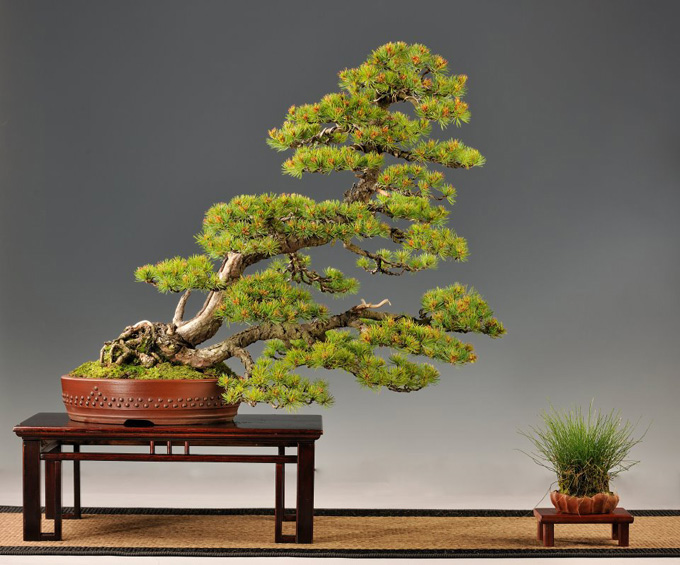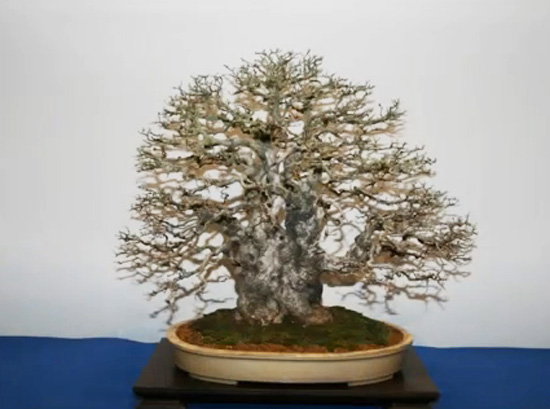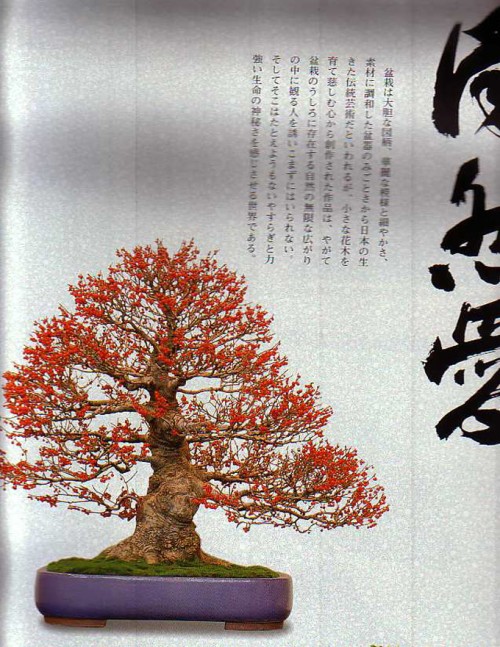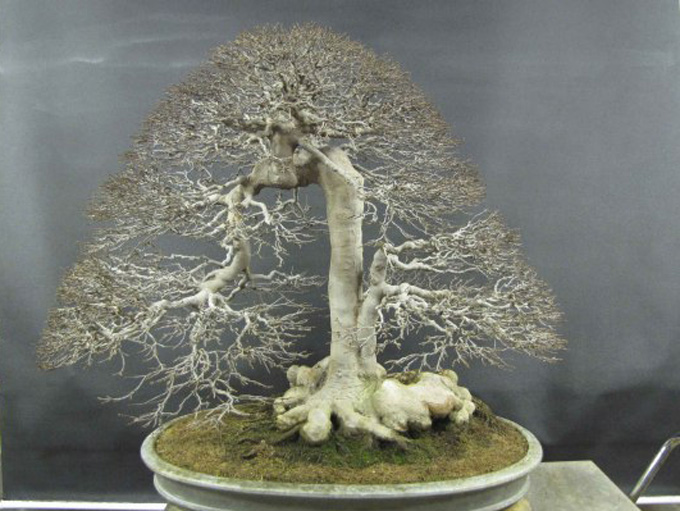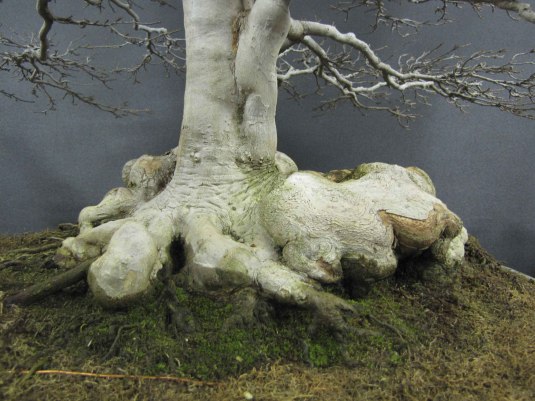Source: Bonsai Tonight
Enjoying a bonsai show
Walking through a bonsai show is a great way to pass an afternoon – or longer if the show is particularly large or excellent. But spending a whole day at a bonsai exhibit? Two days? Three? That’s a different story. I was surprised to find myself with a lot of free time at several great exhibits this fall. After wandering the aisles for several hours on consecutive days, I found there were many different ways to take in all that a show has to offer.
Citrus japonica ‘Hindsii’ – Kinzu, or wild kumquat
At first I spent a lot of time looking at my favorite trees, or trees that triggered enough dissonance to keep me engaged. I looked at the branches, the wiring, the style and the health of the tree. Sometimes I’d ponder the display or try to figure out what I’d do with such a tree were it my own.
Japanese flowering quince – ‘Chojubai’
Needle juniper
This approach only kept me occupied for so long. During my second full day at
Gomangoku, I searched out all of the black pines and really focused on
how they were styled. During my third full day at the exhibit, I studied the relationship between trees and pots, asking myself if I liked the color, shape, size and style of the containers in which the bonsai were growing. At one point I caught myself focusing on the accent plants and even on the mini-slabs on which the accents were displayed. In short, I found there was a lot to learn from quality exhibits.
White pine
The photos in this post come from this year’s Taikan-ten in Kyoto. I don’t know that I saw the program for the event, but I spent a lot of time studying the trees. I think the only reading I did about the exhibit focused on a remarkable pine from Daiju-en that “survived the atomic bomb blast at Hiroshima.”
Japanese black pine
Card displayed with remarkable pine
Everything else I gleaned from the exhibit resulted from studying the trees on display and talking about the trees with
Peter Tea and other visitors. I don’t recall what exactly struck me about these trees as I stood before them, but it likely resembled the questions and comments below.
Shimpaku – what fun movement and dense foliage.
Trident maple – wow, the trunk fills the pot. Good fall color, and interesting glaze on the pot.
Princess persimmon with great fruit – I really want to develop more fruiting bonsai because they provide great color for exhibits.
Black pine – very unusual movement. What is the ideal pot for such a trunk?
Great fall color – interesting pot.
Old satsuki azalea
Elegant princess persimmon – nice open display
Giant trunk for a satsuki – is the pot a good fit?
White pine on a rock – these were always heavier than I expected
Unusual white pine planting – it might be fun to create more interesting “containers” for my trees.
Shimpaku with small scroll
Formal upright black pine – wish I had a few.
White pine with striking first branch – how would I style such a tree?
Japanese maple – great color, great trunk, great roots. Nice composition.
White pine with really long key branch
White pine clump on a slab. This is clearly the year for non-traditional white pine bonsai.
Great white pine – massive base, and the tree was only about a foot tall.
Black pine
Shimpaku
Japanese flowering apricot – ume
Shimpaku with awesome movement. Wow. Really pretty tree. How fun to pick a pot to complement the trunk.
What’s the name of this tree again? I looked it up when I got home. It’s a Japanese pepper tree – Zanthoxylum piperitum, known as isozanshou in Japan. I’d like to find one to work on.
Korean hornbeam
Japanese black pine – a comforting tree to admire. The base is large but not overpowering. The round apex and branch pads give the tree a soft feeling that complements the round bends in the trunk.
The pine above was one of many nice pines on display, and one of the many great bonsai in the hall. Enough so that I didn’t even try to take it all in at once. The sales area made for the best distraction – that and the snack bar. I’ll take a short break now and share more photos from the show later this week.
Read more!
 This Eastern white pine (Pinus Strobus) was donated to the Chicago Botanic Garden by Jim Doyle (Nature’s Way Nursery). The photo is by Steve Moore (Bonsai in Hoosierland).
This Eastern white pine (Pinus Strobus) was donated to the Chicago Botanic Garden by Jim Doyle (Nature’s Way Nursery). The photo is by Steve Moore (Bonsai in Hoosierland).































